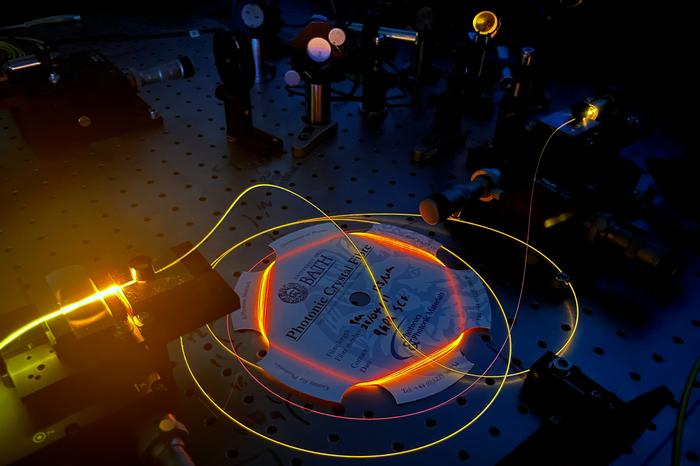Researchers at the University of Bath have developed a new generation of specialty optical fibers designed to meet the unique challenges of quantum computing and communication. These innovative fibers feature micro-structured cores that could revolutionize data transmission in the quantum age.
Adapting Fiber Optics for Quantum Technologies
Current optical fiber networks, while efficient for classical data transfer, may fall short when it comes to quantum communication. The solid cores of traditional fibers are not optimized for the specific wavelengths and quantum properties required by emerging technologies.
Dr. Kristina Rusimova from the University of Bath’s Department of Physics explains, “The conventional optical fibres that are the workhorse of our telecommunications networks of today transmit light at wavelengths that are entirely governed by the losses of silica glass. However, these wavelengths are not compatible with the operational wavelengths of the single-photon sources, qubits, and active optical components, that are required for light-based quantum technologies.”
The new fibers developed at Bath feature a complex pattern of air pockets running along their entire length. This unique design allows researchers to manipulate light properties within the fiber, opening up possibilities for quantum applications that were previously out of reach.
Quantum Entanglement and the Future of Computing
Quantum computing harnesses the bizarre properties of quantum mechanics, such as entanglement, to perform calculations that would be impossible for classical computers. Entangled photons can exist in multiple states simultaneously and influence each other instantly over large distances, potentially unlocking unprecedented computational power.
Dr. Cameron McGarry, formerly of the University of Bath and lead author of the study, emphasizes the importance of this research: “A quantum internet is an essential ingredient in delivering on the vast promises of such emerging quantum technology.”
The team’s work, published in Applied Physics Letters Quantum, outlines the challenges of creating a quantum internet and proposes solutions using specialized optical fibers. These fibers could serve multiple functions beyond simple data transmission, including:
1. Generating entangled photon pairs
2. Converting quantum information between different wavelengths
3. Acting as low-loss switches
4. Storing quantum information as memory
Dr. Alex Davis, an EPSRC Quantum Career Acceleration Fellow at Bath, highlights the versatility of these new fibers: “As well as generating entangled photons, this allows us to generate more exotic quantum states of light with applications in quantum computing, precision sensing and impregnable message encryption.”
Why it matters: The development of quantum-compatible optical fibers is a crucial step towards realizing the full potential of quantum technologies. These advancements could lead to unbreakable encryption methods, more efficient drug discovery processes, and solving complex problems that are currently intractable for classical computers.
As the race to achieve “quantum advantage” – where a quantum device outperforms classical computers on a specific task – intensifies, the specialized fibers created at Bath may play a pivotal role. By addressing the unique requirements of quantum systems, these fibers could accelerate progress in the field and bring us closer to a functional quantum internet.
While significant challenges remain, the work at the University of Bath represents a major step forward in adapting our existing infrastructure for the quantum age. As research continues, we may soon see these novel fibers forming the backbone of a new, quantum-powered global network.


